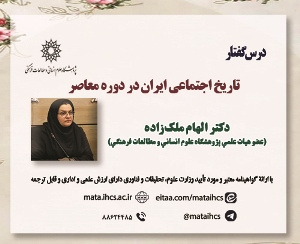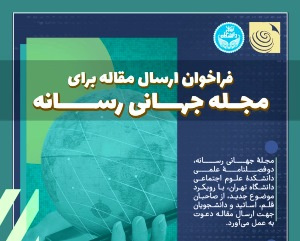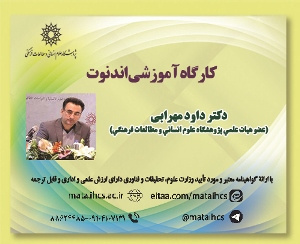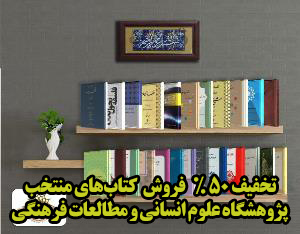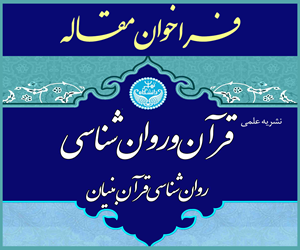تبیین الگوی شهر شاد در ایران؛ مطالعه موردی: شهر بابل (مقاله علمی وزارت علوم)
درجه علمی: نشریه علمی (وزارت علوم)
آرشیو
چکیده
شادی یک مفهوم جمعی است که همه عناصر سیستم شهر را در برمی گیرد. هدف پژوهش این است که الگوی مناسب شهر شاد برای شهر بابل در قالب عامل ها و مؤلفه های متناسب تبیین شود. پژوهش حاضر از نظر هدف از نوع کاربردی است و از نظر ماهیت توصیفی - تحلیلی و از نظر روش آمیخته است. جامعه آماری پژوهش برای تببین الگوی ایجاد شهر شاد، متخصصان علوم شهری در شهر بابل هستند که با استفاده از روش قضاوتی و در دسترس 28 نفر به عنوان نمونه انتخاب شدند. در این پژوهش با بررسی مبانی نظری و پیشینه شهر شاد، عامل ها و مؤلفه های شهر شاد احصاء شده است. سپس با روش دلفی فازی عامل ها و مؤلفه های شهر شاد در شهر بابل تعیین شده است. پایایی و روایی ساختار پرسش نامه دلفی فازی با ضریب آلفای کرونباخ، ضریب پایایی ترکیبی و میانگین واریانس استخراجی در نرم افزار Smart PLS 3 بررسی شده است. سپس با روش تحلیل مسیر، مدل سازی معادلات ساختاری برای الگوی شهر شاد در شهر بابل در نرم افزار Smart PLS 3 انجام شده است. مطابق نتایج، عامل مدیریتی با ضریب مسیر 282/0 بیش ترین تأثیر را در الگوی شهر شاد در شهر بابل دارد. عامل اقتصادی، کالبدی، اجتماعی و زیست محیطی با ضریب مسیر 279/0، 265/0، 254/0 و 236/0 به ترتیب در رتبه های بعدی تأثیرگذاری بر شهر شاد در شهر بابل قرار دارند. برنامه ریزی فضایی و توزیع مجدد برای دسترسی عادلانه شهروندان به خدمات شهری و کاربری های شاد به عنوان پیشنهاد اصلی بر اساس یافته های پژوهش ارائه شده است.Explaining the pattern of happy city in iran the case study a Babol city
Happiness is a collective concept that encompasses all elements of the city system. This study aims to explain the appropriate model of a happy city for Babol city in the form of appropriate factors and components. The present study is applied in terms of purpose and descriptive-analytical in nature and mixed in terms of method. The statistical population of the study to explain the pattern of creating a happy city is urban science specialists in Babol city, which was selected as a sample using a judgmental method and available to 28 people. The factors and components of the happy city in Babol were determined using the fuzzy Delphi method. The reliability and validity of the fuzzy Delphi questionnaire structure were evaluated with Cronbach's alpha coefficient, combined reliability coefficient and mean extraction variance in Smart PLS 3 software. Then, by path analysis method, has been done structural equation modelling for the model of a happy city in Babol city in Smart PLS 3 software. According to the results, the management factor with a path coefficient of 0.282 has the greatest impact on the model of a happy city in Babol city. Economic, physical, social and environmental factors with path coefficients of 0.279, 0.265, 0.254 and 0.236 are in the next ranks of impact on the happy city in Babol city, respectively. Spatial planning and redistribution for fair access of citizens to urban services and joyful uses are offered as the main suggestion based on the study findings. Keywords: Happy City, Pattern Explanation, Path Analysis, Structural Equation Model, Babol City. Extended Abstract Introduction Lack of policy, hasty decisions, significant speed and volume of urbanization and urbanism have led to happiness and vivacity in Iran, especially Babol city, to a passive position. Therefore, recognizing the factors affecting the creation of a happy city and the intensity of the impact of each factor can be a practical guide for compiling a model for creating a happy city in Babol city. Given that a set of physical, economic, social, environmental and managerial factors have been effective in creating anxiety and stress in the citizens of Babol, a set of measures in the physical, economic, social, environmental and managerial fields should be done to increase happiness and vitality in the Babol city. Therefore, in order to plan to create a happy city, first, an appropriate model for creating a happy city in the Babol must be explained so that city managers can gain the necessary knowledge about the factors and components that create a happy city. Therefore, this study aims to explain the appropriate model for creating a happy city in Babol city. In this regard, the present study seeks to answer the following question: - What are the characteristics of the pattern of creating a happy city in Babol? Methodology The present research is applied and descriptive-analytical in terms of purpose and nature, respectively. Also, a combination of methods (quantitative and qualitative) were exerted. The study's statistical population is urban science experts, including university professors and Ph.D. students in the fields of geography and urban planning, urban planning, architecture and urban sociology, who have the necessary knowledge and expertise concerning Babol city, both theoretically and in terms of examples. The judgment and availability method, including scientific experience, willingness and ability to participate in research, were exploited to sample experts and elites. The number of samples was 28. The data related to the theoretical foundations of the research were prepared by library and documentary methods, and the raw data of the research were extracted using the fuzzy Delphi method. The result of studying the theoretical foundations and research background was identifying 5 effective factors on the happy city along with 54 relevant components. The output of the fuzzy Delphi method was to determine 42 components of a happy city in the form of 5 factors in the Babol city. Then, structural equation modeling in Smart PLS 3 software was performed using the path analysis method. Results and discussion According to the results, the managerial factor with a path coefficient of 0.282 has the greatest impact on the model of a happy city in Babol. Economic, physical, social and environmental factors with path coefficients of 0.279, 0.265, 0.254 and 0.236 are in the next ranks of impact on the happy city in Babol, respectively. The sum of these 5 factors also explains more than 0.99% of the model of a happy city in Babol. The findings of management components are consistent with the results of Shahbazi et al. (2020). The results of economic components are consistent with Hu et al. (2020). The results of physical components are consistent with Gim (2020), Jain (2019), and Baghery Beheshty and Loghmani (2020). Also, the results of social components are consistent with Zangiabadi and Mirzaei (2020). Finally, the results of the impact of environmental components on the happy city are consistent with Sajadian et al. (2020). Conclusion According to the presented results, in order to strengthen the factors and components affecting the happy city in the Babol city, the following solutions are suggested: In the field of management factor: spatial planning and redistribution for fair access of citizens to urban services and joyful uses, including restaurants and cafes, museums and antiquities, markets and shopping centers, cultural and religious sites, children's parks and playgrounds, lands and gyms and parks equipped with sports equipment. In the field of the economic factor: strengthening infrastructure and economic potentials to increase the financial ability of households to strengthen purchasing power and meet basic needs, create sustainable employment to increase income and financial savings of households, build affordable housing and in Available for citizens and offering quality goods and reasonable prices for citizens, including cars and home appliances. In the field of physical factor: creating active street life by creating happy spaces using local potentials such as painting urban public spaces and making urban furniture and artistic elements based on the local and indigenous culture, improving and regulating traffic conditions in the Babol city to create desirable, diverse and accessible public transportation along with pedestrian and bicycle axles, as well as to manage and regulate activities related to billboards in order to prevent visual pollution. In the field of social factor: creating opportunities for citizen participation in matters related to the place of residence through the establishment of neighborhood councils, planning to increase the presence of citizens in public spaces of the city by creating security and social monitoring for close and intimate communication of citizens with each other and the formation of trust between them to increase the level of mental and physical health of citizens, as well as planning to increase the vitality and variety of urban activities by creating cultural activities. In the field of environmental factor: strengthening and landscaping of natural elements of Babol city such as Heidarkola Wetland, Moziraj Wetland and Babolrood River in order to increase citizens' access to green space and nature and reduce noise and odor pollution, as well as planning to create parks and gardens New at the city level, as well as protection of the health and cleanliness of the urban environment. Funding There is no funding support. Authors’ Contribution Authors contributed equally to the conceptualization and writing of the article. All of the authors approved thecontent of the manuscript and agreed on all aspects of the work declaration of competing interest none. Conflict of Interest Authors declared no conflict of interest. Acknowledgments We are grateful to all the scientific consultants of this paper
